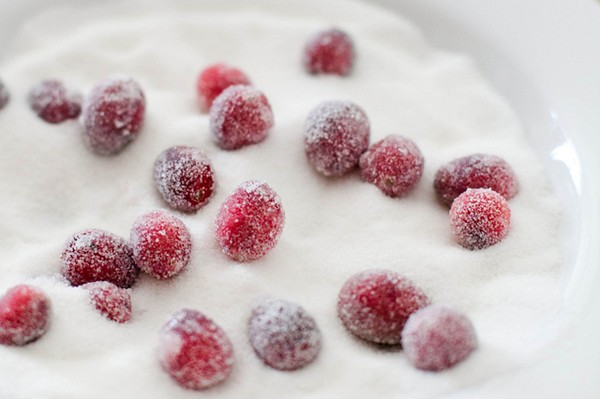The many faces of sugar
January 26, 2015 by Darcie
If you have any vintage recipe books, you probably will find only one or two kinds of sugar specified in the ingredients list of recipes. That is no longer the case today, as the types of sugar available to consumers has greatly expanded. Epicurious explains the many types of sugar available today in their ultimate guide to buying and using the sweet stuff.
The simple white granulated sugar we take for granted is a relatively new commodity. While honey was used as a sweetener for eons, highly refined sugar didn’t become widely available to the masses until the end of 18th century. The mechanization of the Industrial Age allowed sugar cane to processed on a much larger scale. Once people got a taste of the sweet substance they demanded it, and soon people began to look beyond sugar cane. A German chemist discovered a variety of beet that contained high levels of sucrose, and by 2010 approximately 20% of the world’s sugar came from beets.
Although we think of sugar as a simple product, it takes quite a procedure to make it. The process involves the application of heat and chemicals, and in the case of beet sugar, a centrifuge. The bleaching process for cane sugar can involve phosphoric acid and sometimes involves filtering through bone char to further remove impurities.
Most of the sugars listed in the Epicurious article are cane or beet sugar derivatives. While cane and beet sugars are both pure sucrose, some cooks and bakers swear that they perform differently and have a strong preference for one over the other. Light and dark brown sugars are just refined white sugar with molasses added back in. Muscovado sugar (my personal favorite) is made from unrefined sugar that hasn’t had the molasses removed. It has a much more pronounced flavor than either light or brown sugar. There there are the in-between products like turbinado and demarara.
More kinds of sugar are made from further processing white sugar: confectioner’s sugar (also known as powdered or 10x), and superfine or caster sugar also have their uses. But cane and beet sugars aren’t the only game in town; there are even more kinds of sugar to choose from. Date, palm, coconut, and maple sugars are also available and each have their own distinctive flavor profiles and uses.
Photo of How to make sugared cranberries from Annie’s Eats
Categories
- All Posts (6940)
- Antipasto (2135)
- Author Articles (247)
- Book News (935)
- Cookbook Giveaways (983)
- Cookbook Lovers (257)
- Cooking Tips (109)
- Culinary News (299)
- Food Biz People (552)
- Food Online (791)
- Holidays & Celebrations (272)
- New Cookbooks (149)
- Recipes (1500)
- Shelf Life With Susie (231)
- What's New on EYB (133)
Archives
Latest Comments
- Atroyer7 on Danube Cookbook Review and Giveaway
- demomcook on What foods do you look forward to the most for each season?
- demomcook on Danube Cookbook Review and Giveaway
- Darcie on How cookbooks can help build resilience
- mholson3 on Danube Cookbook Review and Giveaway
- Rinshin on How cookbooks can help build resilience
- sarahawker on Danube Cookbook Review and Giveaway
- Sand9 on Danube Cookbook Review and Giveaway
- hankintoby29 on Heritage Cookies of the Mediterranean World – Cookbook Giveaway
- WBB613 on Feasts of Good Fortune Cookbook Giveaway